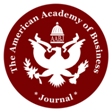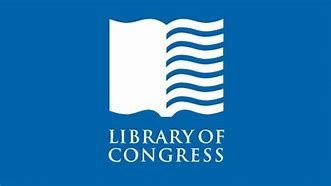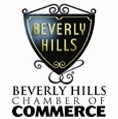|
United States Remains
Greedy for Taxes
Dr. Denise de la Rosa,
Grand Valley State University, MI
Dennis C. Stovall, Grand
Valley State University, MI
ABSTRACT
Over recent years, the
United States has made its way to the top of the list for the highest corporate
tax rate among all Organization for Economic Cooperation and Development (OECD)
countries. Competition for corporate tax dollars has continued to increase,
especially after the economic recession in 2008. Countries are now competing
with each other to have the lowest corporate tax rate so they can attract
companies to move their headquarters there. This paper shows the shift of
corporate tax rates amongst the OECD countries from 2006 to 2015 and discusses
the reasons why select countries decreased their corporate tax rate so
dramatically. New ideas have been introduced throughout the years in the United
States but nothing has been done to change the high tax rate. The United States
should soon join other OECD countries and lower its corporate tax rate so
companies can become a world leader in investment and growth. Competition has
continued to increase over the years and not just between companies, but between
countries. Countries are marketing themselves as location options for
corporation’s headquarters. Different tax structures appeal to corporations of a
particular industry. Different regulations and taxation policies give companies
reasons to move production facilities to the country that has the best tax
structure for them. See Exhibit 1.1, below: The United States has the third
highest general top marginal corporate income tax rate in the world at 39
percent, which is the same as Puerto Rico and is exceeded only by Chad and the
United Arab Emirates. The worldwide average top corporate income tax rate
(accounting for 173 countries and tax jurisdictions) is 22.9 percent, 29.8
percent weighted by GDP. By region, Europe has the lowest average corporate tax
rate at 18.7 percent (26.1 percent weighted by GDP). Africa has the highest
simple average at 28.77 percent. Larger, more industrialized countries tend to
have higher corporate income tax rates than developing countries. The worldwide
average corporate tax rate has declined since 2003 from 30 percent to 22.9
percent.
Full
text
Organization and Use of Executive Advisory Boards in Business Schools: Best
Practices
Dr. Jan Duggar,
University of North Florida, FL
Dr. Julius Demps II,
Jacksonville University, FL
Dr. Russell Baker,
Jacksonville University, FL
ABSTRACT
The
purpose of this paper is to assist deans and business schools in developing
effective advisory boards that
add value to the schools’
activities and programs along with assisting in achieving the schools’ mission.
The paper
addresses the following steps involved in establishing an advisory board: (a)
mission statement for the advisory board; (b) statement of purpose for the
advisory board; (c) selecting board members; (d) appointing members; (e)
adopting charter documents; (f) forming committees, (g)
setting agendas for meetings;
(h) using the board; (i)
raising funds; (j) developing school
and program advocacy;
(k) providing publicity for members;
and (l) evolving member
responsibilities. Business school advisory boards in the United States
include an array of benefits that help the school to grow, sustain, and compete.
Advisory board proliferation and implementation appears to become somewhat
mandatory if these institutions wish to remain relevant. Indeed the role boards
play within business schools are too large for a singular dean to facilitate or
faculty members to carry out with their duties of conducting research, teaching,
and university service. Various functions that boards assist with include
curriculum issues and ideas for new business programs, accreditation, community
image and outreach, and fundraising. Nagai & Nehls (2014) state “Advisory
boards typically offer guidance, support, social, and financial capital to
academic units within colleges and universities. They are generally comprised of
prominent volunteers from the community and appropriate industries or
businesses.” Further illustration of the benefits of colleges and universities
exercising community outreach is articulated when Conroy & LeFever (1996) offer
the following regarding the importance of advisory boards and image: A
well-chosen advisory board that comprises industry-leaders is a visible sign
that program’s administration is seriously interested in maintaining its
connection with the industry. In this sense, the concept of image goes far
beyond mere window dressing. While most programs have mechanisms for
determining and responding to industry concerns, by empaneling an advisory board
administrators give a concrete and clear signal that they will methodically and
intentionally seek out the input of industry leaders.
Full text
Re-positioning
Negotiating Styles within a Values Framework
Dr. David A Robinson, RMIT
Asia Graduate Centre, RMIT University, Vietnam
Dr. Trung Quang Nguyen,
RMIT Asia Graduate Centre, RMIT University, Vietnam
ABSTRACT
Management theories may be
an essential tool used by many professional managers in an attempt to improve
their understanding of what works in relation to leadership and management in
organizations. Yet, with the proliferation of management theory and the sheer
volume of literature on the subject of management, there is a risk that managers
will be unable to absorb all the necessary theories that could be useful to
them. Furthermore, theories may appear to contradict each other. For that
reason, the authors believe there is a pivotal role for the meta-model, i.e. ‘a
model that combines and embraces established models or theories to facilitate a
deeper, richer application of each in its own right’ (Robinson, Morgan & Nguyen,
2016). A previous paper by the same authors (2016) integrated four traditional
management theories into a single meta-model known as the Values Journey. The
use of a meta-model increases the likelihood of the contingent being practically
applied in workplaces. This paper expands the same concept by integrating
negotiation styles into the Values Journey meta-model.
It has already been shown that the
Values Journey meta-model has been used to integrate Maslow’s Hierarchy of
Needs, Herzberg and McGregor’s motivational theories, Tuckman’s model of team
effectiveness and Belbin’s Team Roles (Robinson, Morgan and Nguyen, 2016). This
paper further explores the usefulness of the Values Journey as a meta-model that
incorporates negotiating styles and enhances our understanding of negotiating
positions. Furthermore it introduces a model to facilitate successful
collaborative negotiations. “The psychology of the mature human being is an
unfolding, emergent, oscillating, spiralling process marked by progressive
subordination of older, lower-order behaviour systems to newer, higher-order
systems as man’s existential problems change” Graves, 1970 With its origin
in Graves’s (1970) Model of Bio-Psycho-Social Behaviour, in which he asserted
that developing people experience continuing emotional and intellectual between
two opposing developmental forces. One force compels them to act ever more
responsibly by fitting in with the world; the other to exert their innate power
of self-determination in pursuit of ultimate autonomy.
Full
text
The Influence of Moral
Emotions on the Relationship Between Workplace Bullying and
Attachment
Dr. Jacqueline N. Hood,
University of New Mexico, NM
Dr. Kathryn J. L.
Jacobson, University of New Mexico, NM
Dr. Ryan P. Jacobson,
University of New Mexico, NM
ABSTRACT
Workplace bullying is
defined as repeated, malicious, and health-endangering mistreatment of an
employee by one or more other employees. Workplace bullying has been associated
with negative outcomes for the individual being bullied and for the organization
in which such actions take place. This paper discusses the relationship between
workplace bullying, attachment style and the moral emotions of guilt and shame.
It is proposed that an individual’s attachment style (secure or insecure) is
related to bullying such that those with a secure attachment are less likely to
bully than those with an insecure attachment. Further, the paper suggests that
the moral emotions of guilt and shame moderate the effects of attachment style
on bullying. Specifically, it is proposed that the more secure one’s attachment
style the less likely the individual is to exhibit workplace bullying behavior
with guilt and shame proneness strengthening this relationship. Further, the
more insecure one’s attachment style, the more likely the individual is to
exhibit workplace bullying behavior with guilt and shame proneness weakening
this relationship. Workplace bullying has become an increasingly important topic
in the business literature since managers need to retain the best and the
brightest employees in the current highly competitive business environment.
Workplace bullying is the repeated, malicious, and health-endangering
mistreatment of another individual or individuals at work (Jennifer, Cowie, and
Ananiadou, 2003; Einarsen, 1999; Namie and Namie, 2000). Bullying has been found
to have negative individual and organizational outcomes, such as psychosomatic
illness (Djurkovic, McCormack, and Casimir, 2004), alcohol abuse, (Richman,
Flaherty, and Rospenda, 1996), post-traumatic stress disorder (Vartia, 2001,
2003), reduced productivity (Hoel, Einarsen, and Cooper, 2003), decreased job
satisfaction, reduced organizational commitment, and greater intention to leave
(Tepper, 2000). Although there have been a number of studies on the
consequences of bullying, as well as the characteristics of victims, there is a
paucity of research on the antecedents of workplace bullying.
Full text
Methodology Calculation
Differences of Customer Satisfaction of Field Service in China
Dr. William Bleuel,
Pepperdine University, CA
Xiangre Kong, Pepperdine
University, CA
ABSTRACT
In current high technology
markets, customer satisfaction is becoming a more significant aspect of business
management. In China, companies that provide products and services are concerned
about the impact of field service on customer satisfaction as it may be affected
by speed of economic development. This study examines customer satisfaction
measurements with Field Service in China to determine whether there is a
difference in the drivers of satisfaction provided by three different
statistical methodologies; namely regression analysis, factor analysis and
structural equation modeling. The trend in Overall Satisfaction over the eight
years from 2005 to 2012 has been positive. Calculations of measured parameters
of Field Service from the three methodologies are similar for the past eight
years but with different orders of emphasis both between the methodologies and
the years. For each of the three methodologies, the two most significant
factors are estimated and compared. The comparison indicates that there is no
consistency between the top two factors. The results suggest that companies
need to understand the similarities and differences in these computational
methodologies in order to optimize the use of their resources and adjust their
field service offerings to respond to their customer needs and expectations most
effectively. For each company, market position is often impacted by
well-organized product support. One way is to provide a level of customer
satisfaction that meets customer expectations. While customer satisfaction does
not completely imply customer loyalty, it is usually a significant factor.
Since the high technology industry has such a short half-life and serious
competition, high technology companies usually need to pay significant attention
to supporting their products in order to increase the likelihood of customer
retention. The use of Field Service to improve customer satisfaction, especially
in high technology companies, has been studied in terms of creating systems into
cloud computing to improve the customer retention rate. [1] By collecting,
organizing and analyzing Field Service data in a timely manner, companies can
monitor and improve service quality. [2] Technology advancements have had an
impact on employees and customers. In general, as the use of technology
increases, the impact and implementation may induce stress on the users. [3] In
China, personal education of communication and technical skills is lacking.
Full
text
A Game Theoretical
Analysis of the Equality of Cross-Regional Public Resources and Environment
Dr. Chen-Kuo Lee, Ling Tung
University, Taiwan, R.O.C.
Li-Ru Chen, Department of
Industrial Education and Technology, National Changhua University of
Education, Taiwan, R.O.C.
ABSTRACT
This study discusses the
equality of cross-regional public resources and environment using a
cross-regional game model and the system arranged by central governments.
Secondly, this study intends to identify the solutions for the cross-regional
pollutions using game theories in order to identify the pareto optimal
equilibrium in which all parties cooperate with and treat each other fairly.
This study finds that, after the lengthy and repeated game process ends, all
parties adjust their cross-regional pollutions strategies and choose pareto
optimal equilibrium rationally instead of their strategies. Therefore, pareto
optimal equilibrium is attainable for central governments using incentives and
appropriate systems. Ecological
environment is one of the fundamental resources for economic and social
developments. There is no doubt that environment protection is an essential
choice for sustainable development (Brunnce, 2004). Faced with the irreversible
trend of economic globalization, every nation strives to maximize its interests.
Ironically, the political and economic inequality causes a number of developed
nations to shift their pollutions and ecological crisis to the developing
nations and have thus damaged the developing nations’ existence, particularly
their sustainable development and environment safety (Rao,2002;
Pocklington,2003; Dunoff,2004; Stander, 2004). The international community
spares no effort to solve the problems arising from the overdevelopment and has
thus implemented a multi-legal framework that controls hazardous wastes crossing
borders using the Basel Convention as its core element based on global and
regional treaties, bilateral agreements, and domestic legislatures, thereby
creating the legal basis for the international community to control hazardous
wastes being shifted across borders (Schneider,1996; Waugh,2000; Gallegos,
2002). Nevertheless, the international laws and domestic laws are unable to
solve the problems permanently at the time that the huge difference between
developed nations and developing nations continues to exist (Marcus, 2001; Gary
and Moseley,2005; S
Full text
Corporate Governance
and Firm Financial Performance: The Effects on Security Returns of
Listed
Companies in the Stock Exchange of Thailand
Dr. Kanibhatti
Nitirojntanad, Chulalongkorn University, Thailand
Dr. Nantana Jaengsawang,
Rajabhat Thepsatri University, Thailand
ABSTRACT
The purpose of this study
is to analyze the effects of corporate governance and firm financial performance
on the security returns of listed companies in the Stock Exchange of Thailand.
This study used secondary data of 339 listed companies in the Stock Exchange of
Thailand in all industrial groups excluding companies in the market for
alternative investment, business financial group, as well as the rehabilitation
companies. The data was analyzed using multiple regression analysis. The
results suggested that corporate governance as proxies by board composition and
ownership structure including percentage of directors in board meetings,
percentage of free float on total shareholders were found to have positive
effects on security returns whereas board size was found to have negative
effects on security returns. The percentage of directors with financial or
accounting expertise in the audit committee was not found to have significant
effect on security returns. Firm financial performance as measured by earnings
before interests, taxes, depreciation and amortization (EBITDA) was found to
have positive effects on security returns while free cash flows were not found
to have significant effect on security returns. Book value as a control
variable was found positively related to security returns whereas the leverage
as measured by the ratio of equity to total debt was not found to be
significantly related to security returns. The results of this study implied
that corporate governance and firm financial performance are important
information affecting security returns of listed companies in the stock exchange
of Thailand. Therefore, information disclosed in the financial reports of
companies listed on Stock Exchange of Thailand are relevant to investor decision
making.
Full text
The Demise of Academic
Structure - When Organizational Ails Blindside the Organization
Dr. Janice Spangenburg
ABSTRACT
Treating individuals with
dignity and respect never goes out of style, and incidences of maltreatment and
sexual harassment are rife in organizations because it does not discriminate and
it often is not just between one gender and another. Harassment can target those
who are different in other ways and those with education or wisdom and who know
the difference. A case just like this case study occurs all over the world, in
every industry, including academia. While this case here has occurred and it has
been thought the door was closed on it, it is very much a stone that has been
overturned. It will continue to be a situation that will start others discussing
and thinking about how much we need to learn about this. When we fully learn how
to deal with this, it will truly be a better organization and a better world.
The truth is those in leadership carry the power and the ability to do something
but will they? Let’s hope that the future turns out a multitude of leadership
that not only leads but cares for the welfare and treatment of the people and
doesn’t prioritize the political element so much.
This case study involves an academic
organization and the problem of sexual harassment. This is not unique to the
academic setting and a situation over several years in this study will be
demonstrated. All organizations and leaders of every industry have seen at one
time or another problems with the people who work in the organization. This
makes sense for the problem that has been a plague in organizations that rears
its ugly head, called sexual harassment. Whether it is the overt sexual advance
to someone or the hostile workplace aspect, it hurts and causes a black eye in
the organization. This is caused by a break down and problem in communication
and it can be something that happens innocently, or not. It just is not welcomed
and leaders who condone this and do not do the right things on behalf of the
organization often find that they are part of the problem. This sexual
harassment cannot persist and tears down the positives that are going on in the
organization. It is like a disease that comes in and starts tearing on the very
fiber of what is going on in the organization. It affects the organizations and
its mission and the ability to gain ground and growth. In fact, it stops growth
and causes decay of some of the better things and parts of the organization.
Full text
|
 The Business Review
Journal
The Business Review
Journal



.gif)